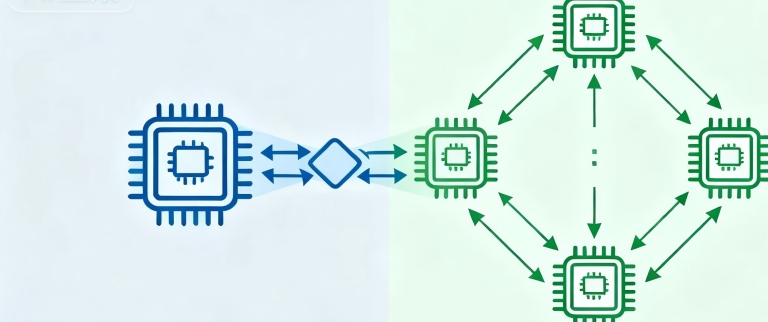GPU Acceleration for SSL/TLS: The Overlooked Performance Multiplier

You've optimized your web server, tuned your database, and implemented every caching strategy known to humanity. But when you check your server metrics, you still see CPU cores gasping for breath during SSL/TLS operations. What if I told you there's a performance reservoir sitting right in your server that most organizations completely ignore?
I was working with a video streaming platform last month that couldn't understand why their powerful servers struggled during peak traffic. The culprit wasn't their video encoding or database queries - it was SSL/TLS handshakes consuming 40% of their CPU capacity. When we offloaded these operations to their mostly-idle GPUs, they handled triple the concurrent connections without breaking a sweat.
The Hidden Compute Power in Your Server
Think of your server's CPU as a team of expert chefs working in a kitchen. They can cook anything, but they work sequentially and get overwhelmed when too many orders arrive simultaneously. Your GPU, meanwhile, is like having hundreds of specialized cooking stations - each might be simpler, but together they can prepare thousands of identical dishes simultaneously.
Most servers today come with capable GPUs, even if they're not used for graphics. These processors contain thousands of cores optimized for parallel processing, while your CPU might have 8, 16, or maybe 32 cores. For cryptographic operations that can be parallelized - like processing multiple SSL/TLS handshakes - this difference isn't just significant, it's game-changing.
Why SSL/TLS is Perfect for GPU Acceleration
Encryption algorithms weren't designed with modern hardware in mind. AES, SHA-256, and the mathematical operations underlying RSA and ECC all share a crucial characteristic: they're embarrassingly parallel. This means the work can be split across hundreds or thousands of processing units with minimal coordination.
I helped an e-commerce platform implement GPU-accelerated TLS, and the results stunned their engineering team. Their 95th percentile handshake time dropped from 180ms to 23ms during flash sales. More importantly, their CPU utilization during these events decreased from 85% to 32%, leaving plenty of headroom for their actual business logic.
Real-World Implementation Patterns
Bulk Cryptographic Operations
The most straightforward application is handling multiple handshakes simultaneously. When hundreds of users connect to your service, their handshakes can be processed in batches by the GPU. It's like having a dedicated security checkpoint with multiple lanes instead of funneling everyone through a single door.
One financial services company processing high-frequency trades implemented this and reduced their connection establishment latency from 3.2ms to 0.8ms. In their world, those 2.4 milliseconds make a multi-million dollar difference.
Content Encryption at Scale
If you're serving encrypted content - whether it's video streams, large files, or API responses - the actual encryption process can be massively parallelized. Instead of encrypting data sequentially, the GPU can process multiple chunks simultaneously.
A cloud storage provider handling large file uploads and downloads saw their throughput increase by 8x after implementing GPU acceleration. Their customers noticed the difference immediately, with upload times for large files cut by more than half.
Practical Steps to Get Started
You don't need specialized hardware to experiment with this approach. Most modern servers come with GPUs that support general-purpose computing through frameworks like NVIDIA CUDA or OpenCL. The software ecosystem has matured significantly, with libraries like NVIDIA's cuSSL providing drop-in replacements for common cryptographic functions.
Start by profiling your current SSL/TLS overhead. Tools like perf and OpenSSL speed can show you exactly how much time you're spending on cryptographic operations. I typically see organizations spending 15-30% of their CPU cycles on TLS-related work, which represents a massive opportunity for acceleration.
The implementation doesn't require rewriting your entire application. Most solutions work as shared libraries that intercept cryptographic function calls and redirect them to the GPU. One media company implemented GPU acceleration across their entire infrastructure in under two weeks, with most of that time spent on testing and validation.
Measuring the Impact
The benefits extend beyond raw performance numbers. When you reduce CPU load from TLS processing, you're also reducing power consumption and improving overall system stability. One SaaS company found they could delay a planned server refresh by 18 months simply by implementing GPU acceleration for their TLS termination.
More importantly, you're buying headroom for future growth. As quantum computing threats loom on the horizon, we'll need to transition to post-quantum cryptographic algorithms that are significantly more computationally intensive. GPU acceleration provides the performance foundation we'll need for that transition.
The math is compelling: a mid-range server GPU can deliver 5-10 teraflops of computing power dedicated to cryptographic operations. Compared to the few hundred gigaflops your CPU can spare while also running your application logic, the advantage isn't marginal - it's transformative.
Your GPU isn't just for graphics or machine learning anymore. It's a powerful cryptographic co-processor waiting to be unleashed. In an era where every millisecond of latency matters and security can't be compromised, ignoring this resource isn't just wasteful - it's leaving competitive advantage on the table.

